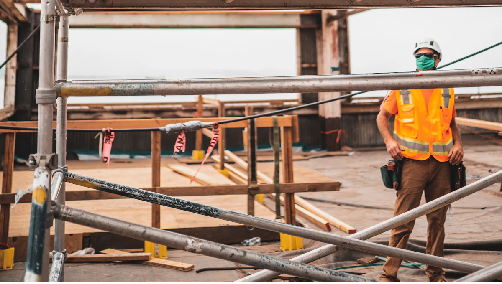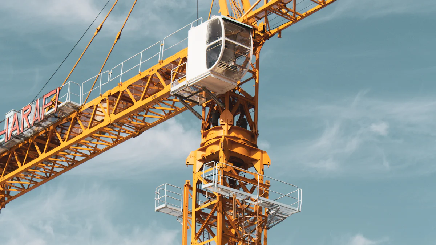Solving Common Challenges in Overhead Gantry Crane Operations
Date: 2024-04-30 Share:
Understanding the Basics of Overhead Gantry Crane Operations
Gantry cranes play a pivotal role in modern industrial operations, offering efficient and secure lifting solutions for heavy loads. To comprehend their significance, it is essential to delve into the key components and functions of these cranes, as well as their diverse applications across various sectors.
What is an Overhead Gantry Crane?
An overhead gantry crane is a type of crane that operates on an elevated runway system, allowing it to carry heavy loads horizontally along the runway. This type of crane typically consists of several key components, each serving a specific function in the lifting and movement process.
Key Components and Their Functions
- Hoist: The hoist is responsible for lifting and lowering heavy loads with precision and control.
- Trolley: The trolley moves horizontally along the crane bridge, facilitating the lateral movement of loads.
- End Trucks: These are located on either side of the bridge and support the entire weight of the crane.
- Runway System: The overhead runway system provides a stable path for the crane’s movement.
Types of Overhead Gantry Cranes and Their Uses
There are various types of overhead gantry cranes designed to cater to different industrial needs. These include single girder gantry cranes, double girder gantry cranes, and rubber-tired gantry cranes (RTGs), each tailored for specific applications such as container handling, warehouse operations, and outdoor material handling.
The Role of Gantry Cranes in Modern Industry
Applications Across Various Sectors
The deployment of gantry cranes is anticipated to be maximum across the construction industry due to rapid urbanization. Additionally, these cranes are utilized in manufacturing facilities, shipyards, scrap yards, railyards, special construction sites, steel mills, ports, warehouses, logistics centers, freight yards, railroads, and workshops.
The Importance of Efficiency and Safety
Gantry cranes contribute significantly to increased productivity by enabling manufacturers to meet demand more effectively. Furthermore,automated gantry cranes offer features such as intelligent load sensing and real-time monitoring which improve productivity while reducing accidents. Safety remains paramount in all sectors where gantry cranes are employed due to their ability to handle bulky loads securely.
Identifying Common Challenges in Gantry Crane Operations

Gantry cranes, while essential for industrial operations, are not without their challenges. Identifying and addressing these common issues is crucial for maintaining operational efficiency and safety.
Mechanical Failures and Maintenance Issues
Wear and Tear of Critical Components
The continuous operation of gantry cranes can lead to wear and tear of critical components such as the hoist, trolley, end trucks, and runway system. Over time, the stress from lifting heavy loads can cause deterioration of these components, impacting the overall performance and safety of the crane.
The Impact of Inadequate Maintenance
Inadequate maintenance practices can exacerbate mechanical failures, leading to unexpected downtime and compromised safety. Without regular inspections and proactive maintenance measures, gantry cranes are susceptible to breakdowns that disrupt workflow and pose potential hazards to personnel and equipment.
Operational Challenges
Load Handling and Positioning Difficulties
Efficient load handling and precise positioning are essential for seamless operations. However, challenges may arise due to varying load sizes, shapes, or weights, requiring operators to adapt their techniques accordingly to ensure safe and accurate handling.
Weather-Related Operational Hurdles
Outdoor gantry cranes are particularly vulnerable to weather-related challenges such as high winds, heavy rain, or extreme temperatures. Adverse weather conditions can impede crane operations, affecting productivity and necessitating additional safety precautions to mitigate risks.
Practical Solutions for Overhead Crane Efficiency
In the quest for optimal overhead gantry crane efficiency, implementing practical solutions is paramount. By focusing on regular maintenance and inspections, as well as enhancing operational practices, businesses can ensure seamless operations and maximize productivity.
Implementing Regular Maintenance and Inspections
Creating a Maintenance Schedule
Establishing a comprehensive maintenance schedule is essential for overhead gantry crane longevity and performance. This schedule should encompass routine checks, lubrication of moving parts, and thorough inspections to identify potential issues before they escalate. By adhering to a structured maintenance plan, businesses can minimize downtime and prolong the lifespan of their cranes.
Key Areas to Focus On
When conducting maintenance and inspections, specific areas require meticulous attention to uphold crane efficiency. These include the hoist system, trolley mechanism, end trucks, runway system, electrical components, and safety features. Regular assessments of these critical elements are imperative in identifying wear and tear, addressing potential malfunctions, and ensuring compliance with safety standards.
Enhancing Operational Practices
Training and Certification for Operators
Investing in comprehensive training programs for crane operators is instrumental in promoting safe and efficient operations. Proper training equips operators with the necessary skills to handle loads effectively, navigate challenging operational scenarios, and adhere to best practices for crane utilization. Additionally,certification ensures that operators are proficient in operating gantry cranes while prioritizing safety protocols.
Leveraging Technology for Better Control and Safety
The integration of advanced technologies such as intelligent load sensing systems, real-time monitoring capabilities, variable frequency drives (VFDs), and regenerative braking systems contributes significantly to enhanced control and safety during crane operations. These innovations enable precise load handling while minimizing energy consumption and reducing the risk of accidents. Furthermore,optimized control algorithms facilitate smoother movements and positioning accuracy for improved overall efficiency.
Gantry cranes are a game-changer for businesses looking to boost productivity while minimizing human error and enhancing overall safety. Energy-efficient gantry cranes are being developed by manufacturers through the integration of advanced regenerative braking systems,variable frequency drives, highly optimized control algorithms,and intelligent load sensing systems.
Efficiency in warehouse operations is a critical aspect for businesses to remain competitive. Indoor gantry cranes play a pivotal role in achieving this goal by focusing on energy-efficient designs and components, reducing the environmental footprint of these cranes.
Ensuring Safety and Compliance in Overhead Gantry Crane Usage

Safety and compliance are paramount considerations in the utilization of overhead cranes to ensure the well-being of personnel, protect assets, and adhere to industry regulations. Adhering to safety standards and regulations, as well as promoting a culture of safety, are essential components of responsible crane operations.
Adhering to Safety Standards and Regulations
Understanding OSHA Guidelines
The Occupational Safety and Health Administration (OSHA) provides comprehensive guidelines for the safe operation of overhead gantry cranes. These guidelines encompass critical aspects such as load capacity limits, inspection requirements, operator training, and safety protocols. By adhering to OSHA guidelines, businesses can mitigate risks associated with crane operations while ensuring compliance with regulatory standards.
Safety Equipment and Protocols
The implementation of robust safety equipment and protocols is imperative for safeguarding personnel and assets during crane operations. This includes the installation of overload protection devices, emergency stop systems, audible warning signals, and visual indicators for load positioning. Additionally,safety protocols should outline clear procedures for load handling, maintenance activities, and emergency response measures to prevent accidents or injuries.
Promoting a Culture of Safety
Importance of Safety Training
Comprehensive safety training programs play a pivotal role in fostering a culture of safety within organizations utilizing overhead gantry cranes. These programs equip operators with the necessary knowledge and skills to operate cranes safely while emphasizing hazard recognition, risk mitigation strategies,and emergency response procedures. Regular refresher courses ensure that operators remain updated on best practices and evolving safety standards.
Encouraging Reporting and Continuous Improvement
Encouraging open reporting of near-misses, incidents,and potential hazards fosters a proactive approach to identifying areas for improvement in crane operations. Establishing a reporting system that allows personnel to communicate concerns without fear of reprisal promotes transparency and enables management to address issues promptly. Furthermore,continuous improvement initiatives based on reported incidents contribute to refining operational processes and enhancing overall safety measures.
Nante Crane
Nante Crane has established strong partnerships with over 150 companies from more than 50 countries worldwide. Through these partnerships, the company indirectly serves more than 5000 high-end end users. This global presence allows Nante Crane to provide its products and services to customers around the world.
Nante Crane excels in the technology of crane intelligence, light weight, energy saving, big data, and the Internet of Things. These advancements enhance safety, production efficiency, and reduce maintenance costs for customers. As a result, Nante Crane‘s products and services have gained high recognition from both domestic and international customers.
Nante Crane offers comprehensive services throughout the project life cycle. This includes project investigation and consultation, design and manufacturing of cranes based on international standards, guidance for transportation, installation, and commissioning, as well as fast maintenance and technical support through its global sales network.
Final Thoughts on Enhancing Gantry Crane Operations
The Path Forward for Overhead Gantry Crane Operations
As the industrial landscape continues to evolve, embracing innovation and best practices is essential for enhancing gantry crane operations. The integration of automation and robotics has revolutionized traditional practices, ushering in a new era of efficiency and safety in the gantry crane market.
Embracing Innovation and Best Practices
The utilization of automation technologies, including computerized control systems and remote operation capabilities, has brought about a significant transformation in the realm of gantry crane operations. Automated gantry cranes equipped with advanced sensors, machine vision, and artificial intelligence capabilities enable precise and efficient material handling operations. These technologies enhance productivity, reduce labor costs, and improve safety.
Comparative Data:
- The integration of automation & robotics is gaining momentum in the gantry crane industry.
- Automated gantry cranes offer features such as intelligent load sensing, collision avoidance, and real-time monitoring.
IoT plays a significant role in the gantry crane industry by enabling the collection and analysis of real-time data. IoT connectivity allows remote monitoring, predictive maintenance, and the optimization of crane performance. It also enhances operational efficiency, reduces downtime, and facilitates proactive decision-making.
Comparative Data:
- The demand for automated gantry cranes is driven by the benefits they offer.
- As industries seek to streamline their processes and maximize productivity, the adoption of automated gantry cranes is expected to grow.
The Role of Continuous Learning and Adaptation
Continuous learning and adaptation are fundamental for staying abreast of technological advancements in overhead gantry crane operations. Industries must remain agile in adopting innovative solutions that optimize material handling operations effectively.
Comparative Data:
- The choice between rail-traveling and wheel or castor-traveling gantry cranes should be made based on specific operational requirements.
- Considering these differences can help optimize material handling operations effectively.
By embracing innovation while fostering a culture of continuous learning and adaptation,businesses can position themselves at the forefront of overhead gantry crane operations, driving enhanced efficiency, safety, and overall productivity.
 English
English






